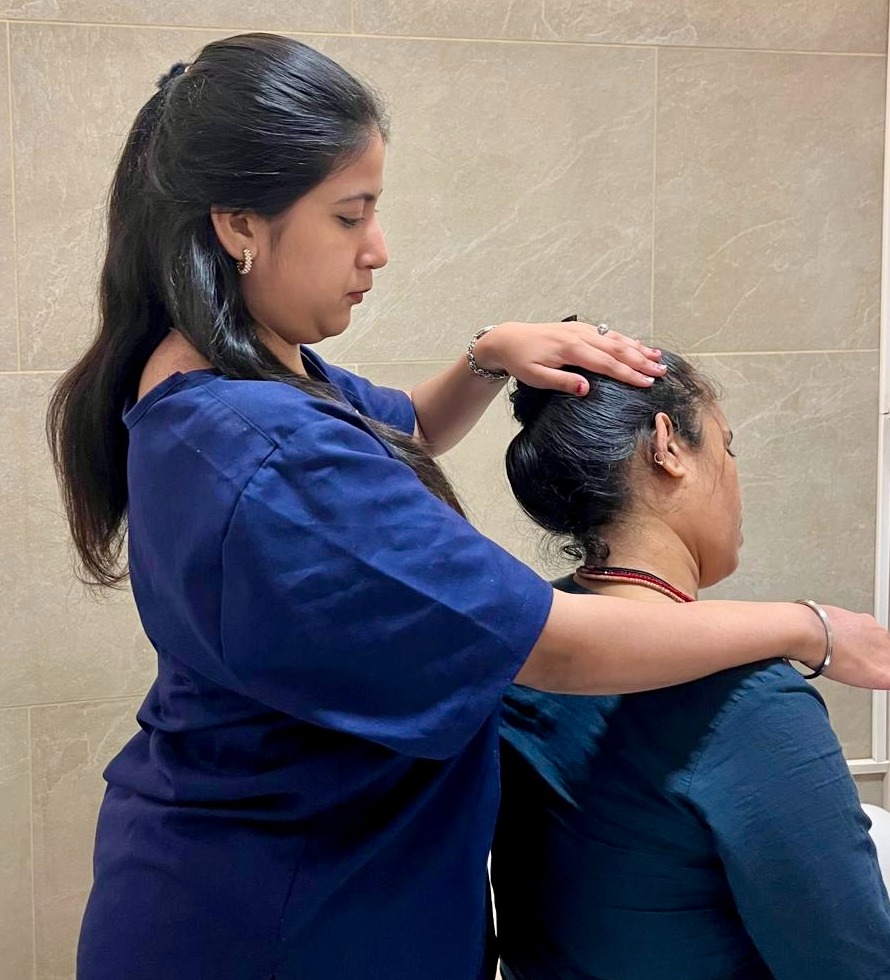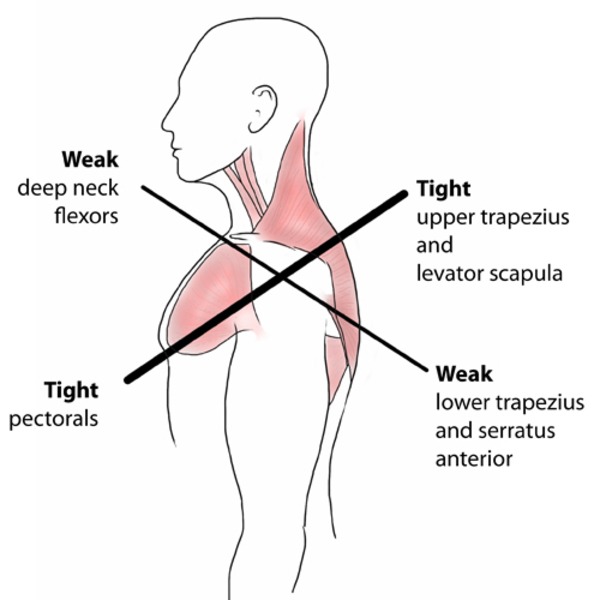



What is Upper Crossed Syndrome? Upper Crossed Syndrome is a postural imbalance that happens when certain muscles in upper body become too tight, while others become too weak. This creates a “cross” pattern of imbalance, usually involving the neck, chest, shoulders, and upper back. People with UCS often have: • Rounded shoulders • A forward head posture • A hunched upper back What Causes It? The most common cause of UCS is poor posture over time. For example: • Sitting at a desk for long hours • Looking down at phone constantly • Poor posture while driving or watching TV • Lack of movement or regular stretching Modern lifestyle encourages bad posture. Common Symptoms • Neck pain or stiffness • Tension headaches • Shoulder pain or limited movement • A feeling of tightness in the chest • A visible hunch in the upper back • Fatigue after sitting or working at a desk • Jaw pain How Can a Physiotherapist Help? 1. Posture Assessment: Physiotherapist assess posture, movement, and muscle imbalances. 2. Stretching Tight Muscles: Stretching of the tight muscles is done to relieve the tension. 3. Strengthening Weak Muscles: The weak muscles are need to be activated and strengthened. 4. Postural Training: Teach how to sit, stand, and move better throughout the day to avoid slipping back into bad habits. 5. Manual Therapy: Manual therapy techniques are employed to relive pain and tension as well as release muscle tightness. Upper Crossed Syndrome is very common, but it does not have to become a lifelong problem. With the right exercises and a bit of awareness, the posture can be corrected and pain can be reduced. At Physionautics, our experienced physiotherapists are here to help you move better, feel better, and live pain-free.
We hate spam too.